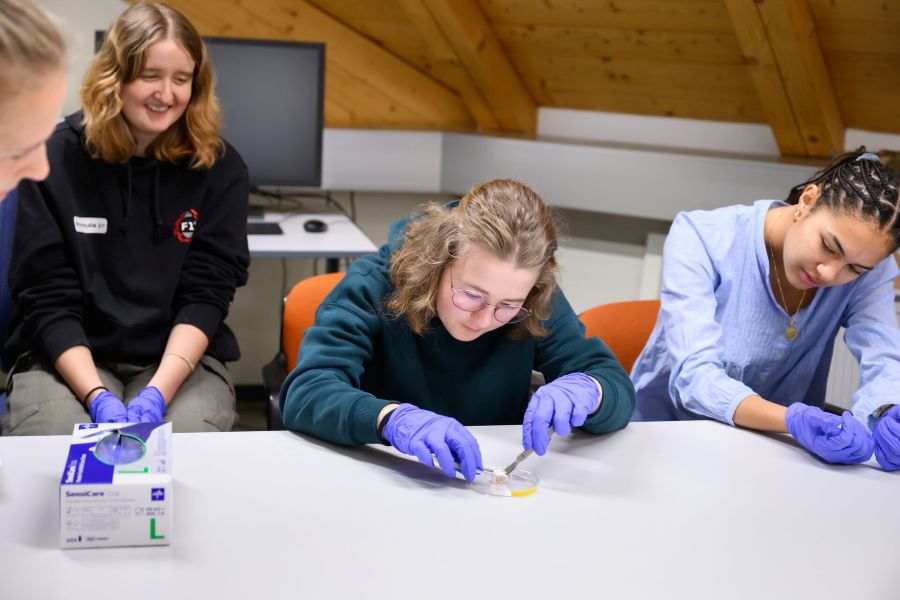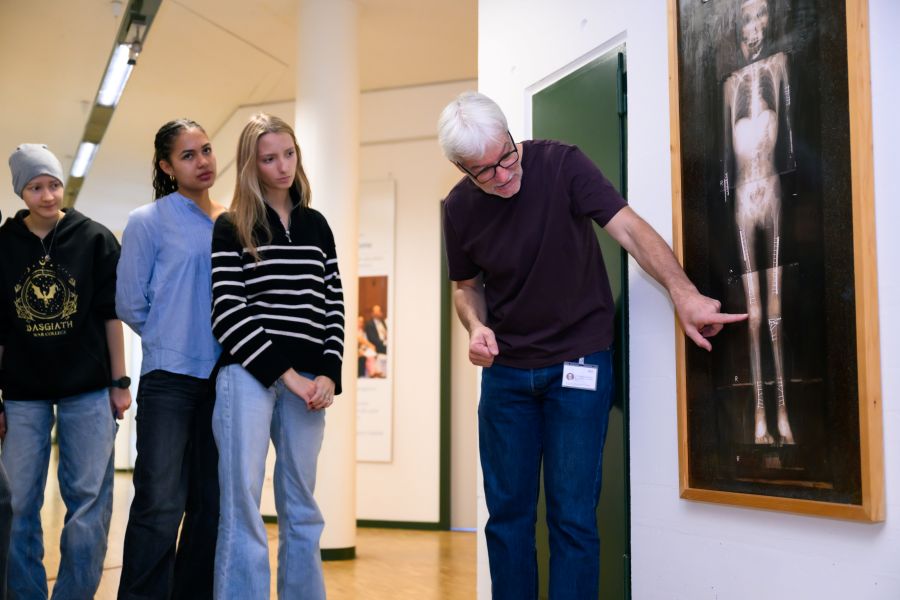Insights into research

Around 30 high school students from the Schweizerische Alpine Mittelschule Davos (SAMD) visited the AO Center on Monday, November 10, 2025. They learned about the surgical treatment of bone fractures and gained insight into the wide range of career opportunities in research.
The SAMD, Davos’ hospital (Spital Davos), and the AO Foundation have a long history of collaboration. Originally established by Peter Matter, AO Past President and former chief surgeon at the hospital, it provides SAMD students with the opportunity to learn more about the work of the AO Foundation and the surgeons at the hospital. In addition, it also aims to offer those who have not yet decided on a course of study or vocational training an insight into the diverse career opportunities in medical research.
Every year in November, the three-part program begins with a visit to the AO Center. Together with their teachers, Alexander Fehr (biology) and Dmitriy Khoroshev (chemistry), around 30 students were introduced to the history of the AO Foundation and surgical fracture treatment by Hans-Curd Frei, chief surgeon at Spital Davos. Given his busy surgery schedule, Frei spoke only briefly and then handed over to Christoph Sprecher, Project Leader Biomedical Materials at the AO Research Institute Davos (ARI). He presented some impressive figures: in 1944—before the AO—60 percent of femur fractures led to partial or complete disability, compared to only 3 percent today.
Despite this enormous improvement in healing after bone fractures, there is still room for improvement. Christoph Sprecher presented one of the newer research projects at the ARI to the students: the AO Fracture Monitor, an implanted sensor that continuously monitors bone healing. The project shows how many different professions and specializations work together in research: “Surgical fracture healing is not a biological or technical problem, but a joint task.” He himself originally trained as a locksmith at EMS Chemie and only later studied human biology in Munich. “If you plan on ever writing a dissertation, I advise you to start before you turn 40!”
The presentation was followed by a tour of the AO Center, during which the students were able to take a look at the various work areas and laboratories. Together with Marcia Mürner, a PhD student at ARI, those who felt confident enough were able to try their hand at dissecting intervertebral discs from cow tails to get an idea of their different components. The cow tails are slaughterhouse leftovers and are used at the ARI to research minimally invasive treatment options for disc degeneration. Mürner also willingly shared insights into her career path to date and encouraged those interested in a career in research to contact her and attend a taster day.
In part two of the program, students will visit Spital Davos, where they will have the opportunity to practice their fine motor surgical skills in a “skills lab.” Those specializing in science will also have the opportunity to experience the AO Davos Courses at the Congress Centre in early December, where they will perform the same exercises as aspiring surgeons.
You might also be interested in:
- Discovering what’s going on at the AO Davos Courses 2025
- Hands-on learning in skeletal repair
- Getting a taste of medical work
- Learn more about the AO’s three institutes: the AO Research Institute Davos, AO Innovation Translation Center, and AO Education Institute



